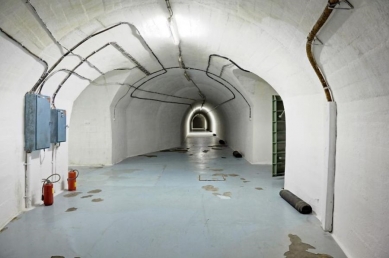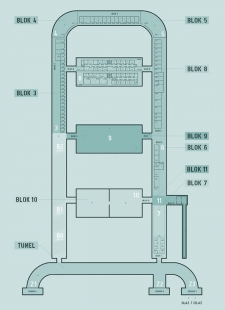
From Titov's nuclear bunker, a gallery has emerged
Konjić (Bosnia and Herzegovina) - The leader of Yugoslavia, Josip Broz Tito, was supposed to be protected from a potential nuclear war; now, the Bosnian bunker has become a gallery for three months. An exhibition of artists from nineteen countries worldwide was opened here today, the AP agency reported. The bunker is located eight kilometers from the town of Konjić in the Bosnian mountain range of Bjelašnica. It is situated at a depth of 280 meters and consists of a complex of rooms and corridors shaped like the letter U. It covers a total area of 6,500 square meters and once housed a hospital, a decontamination room, and a command and control center.
"Artists have been working on their pieces for many months. The exhibits are placed in nearly a hundred rooms of the underground labyrinth," said the project director, Edo Hožić. The bunker was first opened for artistic purposes two years ago, when there was also a three-month exhibition held here. The goal is to permanently transform it into a gallery.
The current exhibition somewhat resembles the original purpose for which the bunker was intended. The very first installation is simply an audio piece that mimics the loud explosion of a nuclear bomb near the bunker. A ticket to the exhibition costs only five euros (130 crowns). However, each visitor to the bunker must also have permission from the army, which local tourist agencies can arrange.
The construction of the entire complex cost billions of dollars and took 26 years to complete. The bunker was finished only in 1979, just a year before the death of the Yugoslav communist leader. Only Tito and a few other chosen ones knew about the existence of the underground fortress. This remained the case until the 1990s. The secret was revealed when Bosnia seceded from the then-Yugoslavia in 1992. The complex is now in the hands of the Bosnian army.
"Artists have been working on their pieces for many months. The exhibits are placed in nearly a hundred rooms of the underground labyrinth," said the project director, Edo Hožić. The bunker was first opened for artistic purposes two years ago, when there was also a three-month exhibition held here. The goal is to permanently transform it into a gallery.
The current exhibition somewhat resembles the original purpose for which the bunker was intended. The very first installation is simply an audio piece that mimics the loud explosion of a nuclear bomb near the bunker. A ticket to the exhibition costs only five euros (130 crowns). However, each visitor to the bunker must also have permission from the army, which local tourist agencies can arrange.
The construction of the entire complex cost billions of dollars and took 26 years to complete. The bunker was finished only in 1979, just a year before the death of the Yugoslav communist leader. Only Tito and a few other chosen ones knew about the existence of the underground fortress. This remained the case until the 1990s. The secret was revealed when Bosnia seceded from the then-Yugoslavia in 1992. The complex is now in the hands of the Bosnian army.
The English translation is powered by AI tool. Switch to Czech to view the original text source.


0 comments
add comment










